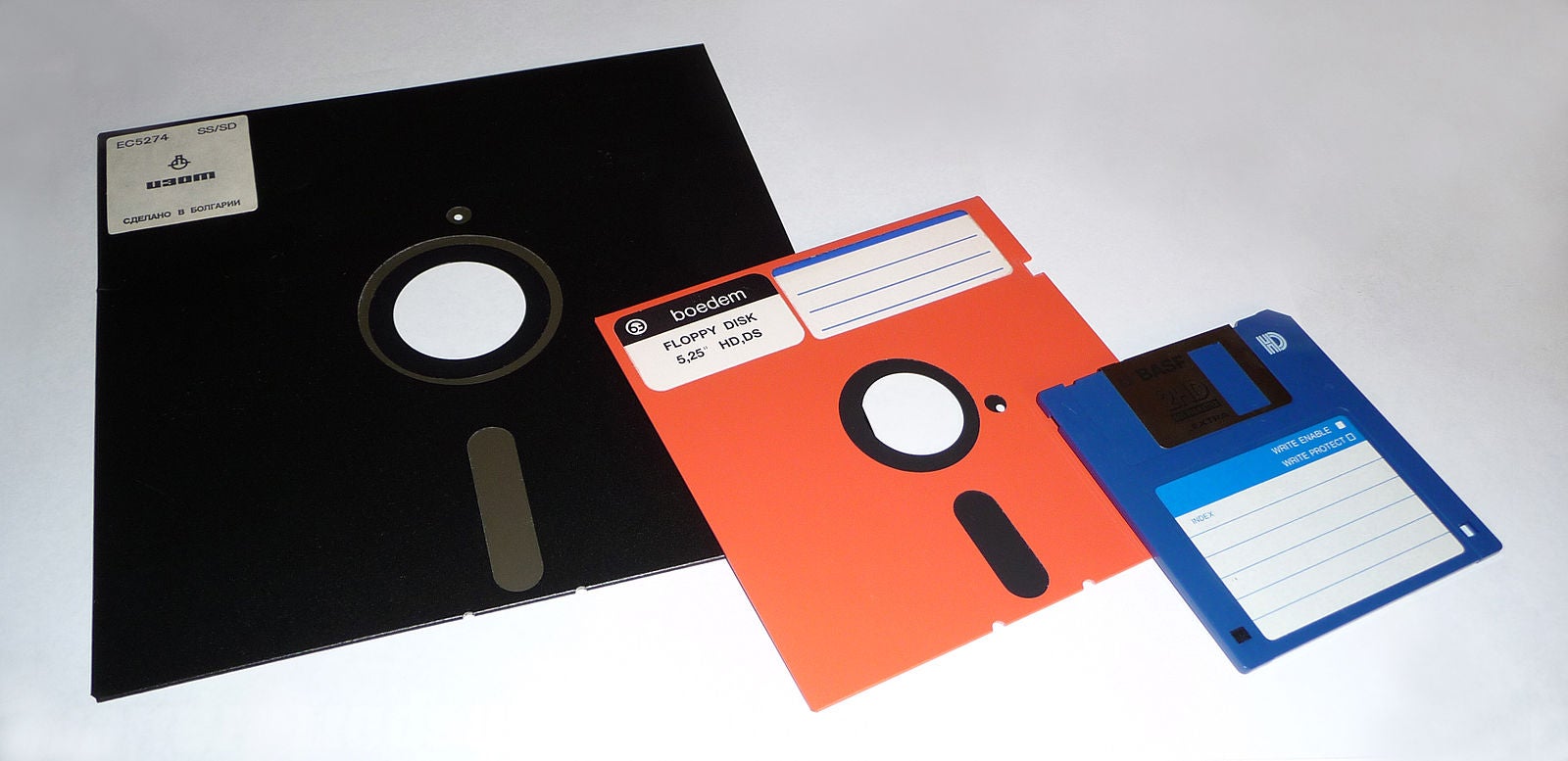A post a few weeks ago featured some obsolete technology that's
making a comeback. This time I want to talk about how obsolete
technologies often surprise people at their longevity.
A report a few months ago from the US Government Accountability
Office about legacy computing systems pointed out that the US Department of Defense still uses floppy disks. Not just any floppy disks: 8-inch floppy disks--that's the big black one on the left (image courtesy Wikimedia):
(Incidentally, students love these: I regularly show some old 8-inch floppies in my lectures to help illustrate the mysteries of old, unfamiliar artifacts.)
But this isn't just any system that uses the old disks. This is a part of the Strategic Automated Command and Control System. As the report describes this system, the system:
Coordinates the operational functions of the United States’ nuclear forces, such as intercontinental ballistic missiles, nuclear bombers, and tanker support aircrafts. This system runs on an IBM Series/1 Computer--a 1970s computing system.
Yes, the US military uses computers from four decades ago as an integrated part of its current nuclear forces. And the agency admits that the oldest parts of the system are from about 1963.
Personally, I'm not really bothered that much by this. For one, it means that unlike the Democratic National Committee or the US election, the system that controls nuclear weapons can not be hacked over the internet (probably).
I'm certainly not surprised by the age of the system. In David Edgerton's book The Shock of the Old, he points out that we shouldn't ever be surprised by old technologies. For a variety of reasons, many inventions outlast their initial life estimates, despite the apparent rapid pace of technological change. And so maintening existing systems often accounts for a major fraction of technological activity. That's what most engineers will end up doing: keep old technological systems and infrastructure going day to day, year to year, decade to decade.
For what it's worth, the 8-inch floppies weren't the oldest things in the GAO report. The Department of the Treasury uses an IBM mainframe approximately 56-years-old for the master tax records of individuals and businesses. The Department of Veterans Affairs also uses an IBM mainframe for payroll and benefits.
If I were to guess, those are probably IBM System/360 computers, which was actually an entire product line of compatible systems, a first for the industry when introduced in 1964. IBM created the System/360 family in response to the observation that software development had grown so expensive that for many organizations it was more costly to replace software than the hardware in ran on. IBM got around this potential sales problem with a new family of computers, from cheaper and slower models all the way up to a super-fast super-expensive supercomputer, all of which could, in theory, run the same software. It was so successful that IBM still produces computer servers today that can still run much of mission-critical software written for the System/360 in the last five decades.
The Department of Defense does intend to replace the System/1 and its 8-inch floppies by 2017, although there are no concrete plans to upgrade all of the other government systems I mentioned.
The whole story reminded me of a handful of other technological marvels that long-outlasted their initial expectations: the Mars rovers. Sojourner
landed in 1997 and was intended to last 7 days; it lasted 83. Spirit and Opportunity landed in 2004, with missions planned for about 90 days. Spirit communications ended in 2010, but Opportunity is still roaming the Red Planet, as of mid-August 2016, 4581 days since it arrived. Who knows when it will stop? Curiousity, which landed in August 2012, is also still operational, and just celebrated its birthday in style:
So, lets not given up entirely on obsolete technology, and remember that obsolescence is often a matter of perspective.
